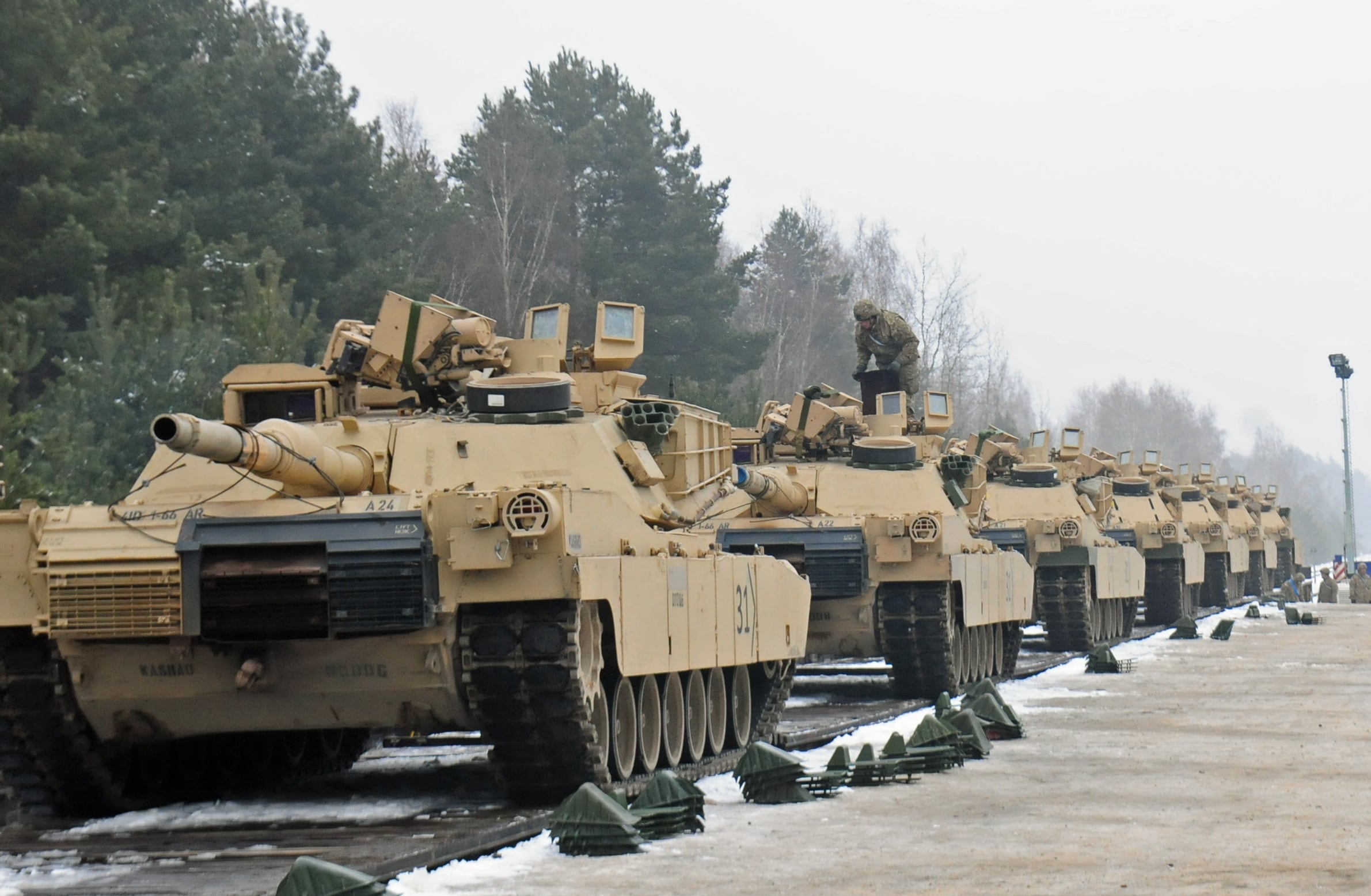Automation doesn’t mean soldiers will be replaced by machines, but it could mean they’ll be working alongside them in future conflicts, the Army’s chief of staff said Tuesday.
Defense budgets in the future are going to be pretty much flat, Gen. James McConville said during a talk at the Atlantic Council. So the service will have to make every dollar count, and that could impact jobs like armor crewmen loading ammunition, maintainers on tracked vehicles, soldiers planning logistics and Rangers flying to the objective in a heavy-lift helicopter.
“A lot of people look at artificial intelligence and machine learning and think we’re going to have all autonomous vehicles or aircraft out there fighting the future fights," McConville said. "I don’t see it that way.”
“What I see, especially in the near term, is where we’re going to be able to go to maybe more minimum manning — where we have less people in aircraft, less people in some of our armored vehicles,” he added.
Future tank crews may not require a loader, for instance, just like the navigator role in aircraft has already become less necessary with GPS developments. Automated maintenance on vehicles, such as a robotic pit crew, also could handle tasks like changing out tracks that have fallen off.
Robots also aren’t likely to be leading future fights from the front. Instead, McConville sees them as a major boon to the logistics and baggage train that the United States takes to every conflict.
RELATED

“We’ve done some pilots on preventive maintenance with our helicopters and we’re finding that having artificial intelligence and a lot of data allows us to save money on parts,” he said. “We’re also going after additive manufacturing so we don’t have to carry as many parts with us. And then all our programs are after some sort of fuel efficiency because, again, we understand the logistics tail.”
The term “optionally manned” has also gained some traction as of late, meaning that a vehicle can conduct remote-controlled operations while the crew is off-platform. The Army is exploring this capability to replace its aging M-2 Bradley fighting vehicles.
“We talk about optionally manned, but I’m more into the minimally manned capability,” McConville said. “We got a Ranger unit or something like that going in, I don’t necessarily see us putting them in an aircraft and having no one up front. You got 30 Rangers going somewhere and they look out front and there’s no one there? ... I don’t see that."
What he does see as a possibility is a reduction in crew members piloting that aircraft thanks to automation.
That could also help with the Army’s long-term problem of finding talent in a competitive job market. The service has been trying to grow to a 500,000-strong active-duty force by the end of the next decade, but recruiting woes have hindered that plan.
“If you put four people in a vehicle, you have to hire four people,” McConville said. “The second thing is you’ve got to protect them and build around them. Then you have to start thinking about all the other things that go in that. So if every person counts and a machine can do it, then let the machine do it.”
Kyle Rempfer was an editor and reporter who has covered combat operations, criminal cases, foreign military assistance and training accidents. Before entering journalism, Kyle served in U.S. Air Force Special Tactics and deployed in 2014 to Paktika Province, Afghanistan, and Baghdad, Iraq.








